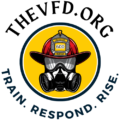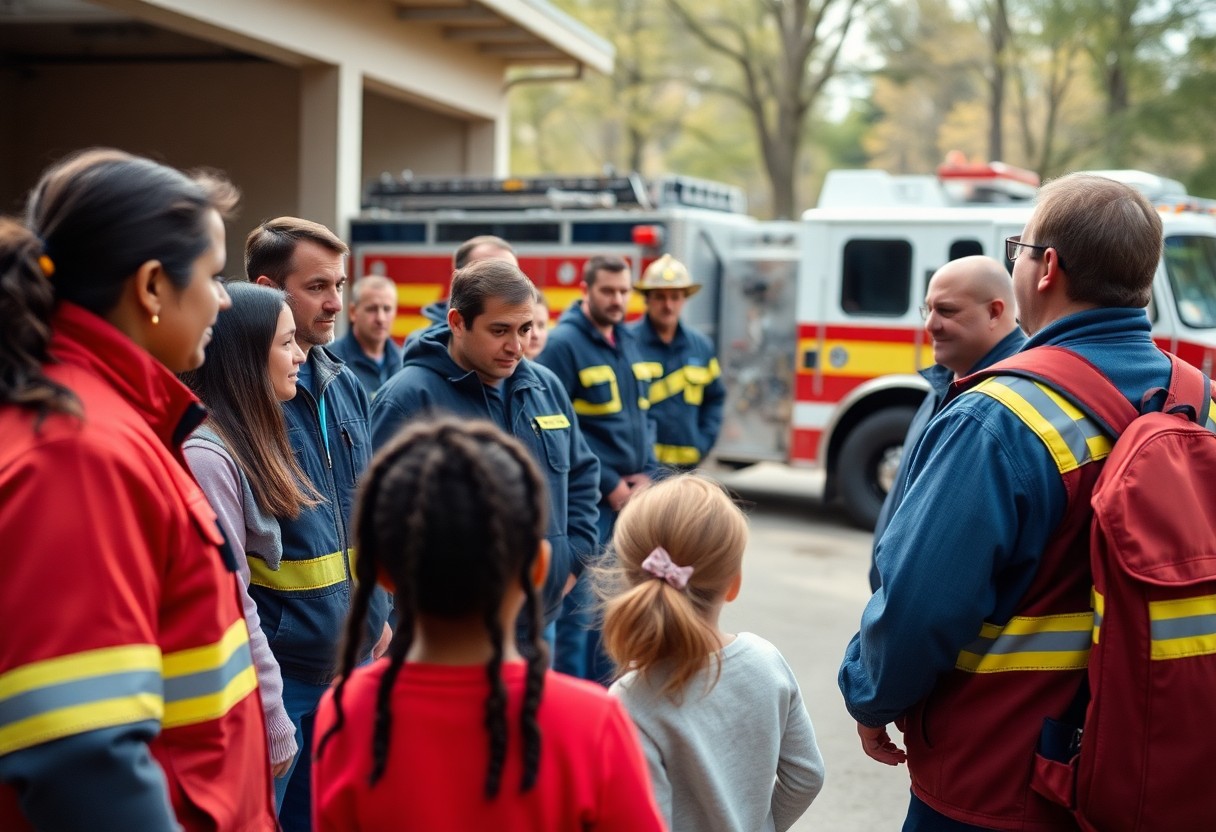Many volunteer fire departments struggle to attract new members, making community engagement crucial. Hosting free classes is a proactive way to not only educate potential recruits about fire safety and emergency response but also to spark interest in joining your team. Understanding the right frequency for these classes can significantly impact your recruitment efforts. In this post, you’ll discover effective strategies and recommendations on how often your department should organize these valuable sessions to ensure a steady influx of enthusiastic talent.
Importance of Community Engagement
Before you can effectively recruit new talent for your volunteer fire department, it’s important to engage with your community. Hosting free classes not only serves as an informative platform but also strengthens the bond between your department and the people you serve. By investing in community education, you demonstrate your commitment to safety and readiness, encouraging individuals to consider joining your team.
Strengthening Community Relationships
Around your community, the perception of your fire department plays a significant role in how potential recruits will view your organization. When you host free classes, you open up avenues for dialogue, creating trust and respect among residents. These classes can foster a sense of camaraderie and connection, making people feel more inclined to support and join your team.
Increasing Awareness of Fire Safety
On another note, holding free classes allows you to educate the community about fire safety best practices, enhancing their overall knowledge and preparedness. This awareness can be a game-changer in promoting a culture of safety in your area, enabling residents to respond effectively in emergencies.
Understanding fire safety is not just beneficial for recruitment; it empowers individuals to take proactive measures in their own homes and neighborhoods. By hosting these classes, you can enlighten attendees about fire prevention, emergency response, and the role they can play in ensuring communal safety. This knowledge not only prepares them for potential emergencies but also creates a pool of informed individuals who may eventually want to serve as volunteers, thereby enhancing your team’s capabilities.
Benefits of Hosting Free Classes
Clearly, hosting free classes serves multiple purposes for volunteer fire departments, making it an effective tool for community engagement. These events not only introduce potential recruits to the firefighting profession but also enhance your department’s visibility within the community. By providing valuable skills and knowledge, you foster a sense of community trust and support that can extend beyond the classroom.
Skill Development for Participants
Development of skills is one of the key benefits provided by these free classes. You will find that the hands-on training and knowledge imparted during these sessions can prove invaluable. Participants learn vital firefighting techniques, safety protocols, and teamwork, preparing them not just for a role in volunteer service but also for any emergency situation they may encounter in everyday life.
Effective Recruitment Strategy
Among the strategies for boosting recruitment, hosting free classes is particularly effective. This approach allows you to directly showcase what being a volunteer firefighter entails while assessing the suitability of potential candidates in a relaxed, non-committal setting. Your department can pinpoint individuals who demonstrate enthusiasm, teamwork, and resilience during these training sessions, making the recruitment process smoother.
In addition, free classes create a pipeline for future volunteers by fostering relationships with community members. Those who attend may be intrigued to learn more, which can lead to informal discussions about joining the team. You also gain the opportunity to provide personalized feedback and mentorship, making it easier for interested individuals to transition into active roles within the department. This proactive engagement ensures that your fire department is constantly nurturing potential talent, ultimately strengthening your team.
Recommended Frequency for Classes
If you want to effectively recruit and engage new talent, it’s vital to establish a regular schedule for community classes. A consistent approach helps build familiarity and trust, making it easier for potential volunteers to consider joining your department. Finding the right balance in frequency will depend on your community’s needs and interest levels, yet both monthly classes and seasonal workshops can play significant roles in boosting recruitment efforts.
Monthly Classes
Between monthly classes, you can cultivate a steady flow of interested volunteers. These classes provide ongoing opportunities for community members to learn about firefighting, get hands-on experience, and interact with current firefighters. By consistently offering these classes, you build a supportive environment where potential recruits feel welcomed and informed.
Seasonal Workshops
Seasonal workshops can be an excellent supplement to your monthly classes, allowing you to focus on specific skills or topics relevant to the time of year. Understanding your community’s unique needs during different seasons, such as wildfire preparedness in summer or winter safety tips, can enhance your outreach efforts. These workshops provide an opportunity for you to showcase specialized training and demonstrate the various roles within the department, thereby attracting a diverse group of potential volunteers.
Target Audience for Classes
Despite the common perception that volunteer fire departments mainly attract older individuals, your target audience for classes should include a broad demographic range. Engaging various age groups ensures a diverse pool of talent and perspectives, ultimately strengthening your department. Focus on both youth and adults to maximize your recruitment efforts and community involvement.
Youth Engagement
Engagement with local youth can create a strong foundation for future firefighters. By introducing them to the fire service through hands-on activities and educational workshops, you spark their interest early on. Interactive classes can motivate youth to consider fire service careers while instilling a sense of responsibility and commitment to their community.
Adult Participation
Between 18-50 years old, adults represent a key demographic for volunteer recruitment. They often have the skills, time, and motivation to commit to volunteering while balancing work and family responsibilities. By targeting this age group, you can attract individuals who value community service and are looking for meaningful ways to contribute.
At this stage, focus on providing flexible scheduling and accessible class formats to accommodate potential participants. Offering evening or weekend sessions can make it easier for busy adults to attend. Additionally, highlight the personal benefits of participating, such as networking opportunities, team building, and the chance to develop unique skills. Tailoring your outreach efforts to appeal to the interests and needs of adults can enhance participation and lead to a stronger, more diverse volunteer fire department.
Strategies for Promoting Classes
Not only should you create a strong promotional strategy for your free classes, but you must also adapt your methods to ensure maximum reach and attract potential volunteers. Using various channels will allow you to engage with diverse audiences and generate interest in your programs. Effective promotion can make all the difference in building a robust volunteer base for your fire department.
Social Media Outreach
To effectively utilize social media, you should craft engaging posts that highlight the benefits of joining your community classes. Use eye-catching graphics and share success stories from current volunteers to inspire others. Encourage your existing members to share posts and create event pages that facilitate easy RSVPs, ensuring a wider audience sees your initiatives.
Collaborations with Local Organizations
With partnerships in place, you can tap into the networks of local schools, community centers, and businesses to spread the word about your classes. These organizations often have established communication channels and access to potential volunteers, enabling you to reach individuals who may not be actively seeking opportunities. Their support can enhance credibility and encourage participation.
Understanding the key players in your community and how they operate is fundamental to building effective collaborations. You can propose joint events or workshops, allowing local organizations to showcase their contributions alongside your fire department. This approach fosters a sense of community and creates a shared mission, increasing the likelihood of attracting individuals interested in firefighting and public service. By leveraging these partnerships, you significantly expand your outreach and tap into diverse segments of your local population.
Measuring Success and Impact
Once again, evaluating the success and impact of your free classes is necessary for enhancing your recruitment efforts. You should consider various qualitative and quantitative methods to assess how well these classes attract potential volunteers. Look at participant retention rates, community engagement levels, and the number of new recruits that result from these initiatives. By analyzing these factors, you can continuously refine your approach and ensure your classes effectively serve your community and meet your department’s needs.
Participant Feedback
An effective way to measure the impact of your free classes is through participant feedback. You can gather insights via surveys or informal conversations, allowing you to understand their experience and satisfaction. Positive feedback can validate your efforts, while constructive criticism helps you identify areas for improvement, ensuring your classes are valuable and appealing to potential recruits.
Recruitment Metrics
Below, keeping track of recruitment metrics is vital to understanding the effectiveness of your classes. By monitoring the number of participants who express interest in joining, as well as the conversion rate to actual recruits, you can gauge the success of your initiatives. These metrics will enable you to adjust your strategies in real-time, focusing on what works best to attract new talent.
For instance, you can analyze trends in recruitment by comparing data before and after hosting classes. If you notice an uptick in applications following a specific course, this indicates that your offerings resonate with the community. Additionally, tracking the demographic information of participants can help tailor future classes to address the interests and needs of your audience more effectively, fostering a more robust volunteer base.
To wrap up
Presently, it’s imperative for volunteer fire departments to host free classes at least quarterly to effectively recruit new talent. By providing frequent opportunities for community members to learn about firefighting, you create an inviting atmosphere that encourages participation. These classes can also educate your community about the importance of fire safety, fostering a sense of trust and collaboration. Engaging regularly with your audience helps to maintain interest and enthusiasm, which can be pivotal in attracting dedicated volunteers willing to serve and protect your community.



